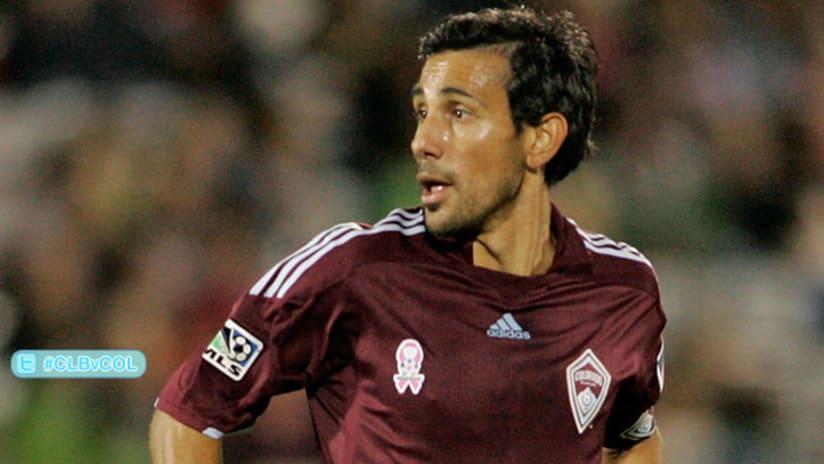Thursday’s 1-0 win by the Colorado Rapids over the Columbus Crew to open the 2010 playoffs was, in several ways, a good example of what to expect over the next three weeks.
The intensity was a notch or three higher than usual. The two teams were well-scouted and drilled, so there were few surprises. The defending was committed and physical. And in the end, the result simply came down to who executed better once they worked themselves into a position to score.
The Formations
[inlinenode:322106]The Rapids came out in a 4-4-2 lineup that has been described as an “empty bucket.” The term – some would say pejorative – is a reference to the lack of a true playmaker beneath their two star forwards, Conor Casey and Omar Cummings. This puts the on-the-ball creative onus on those two, as well as Brian Mullan and Wells Thompson, Colorado’s flank midfielders.
The Crew came out with a modified version of the 4-1-3-1-1 they’ve been playing all year. The modification was switching Eddie Gaven from his customary wide position to the center in front of lone defensive midfielder Brian Carroll.
The idea was to lighten the play-making load on Guillermo Barros Schelotto and get the Crew’s two livewire wingers, Robbie Rogers and Emmanuel Ekpo, onto the field from the first whistle.
The First Half
For years, Pablo Mastroeni was the shield for Colorado’s backline. The former US international was a destructive force on the defensive side of the ball, thwarting attacks and then distributing cleanly and efficiently to the nearest teammate while only pushing into the offensive third when offered an engraved invitation.
That’s why Gary Smith’s eventual decision to drop Jeff Larentowicz deeper than Mastroeni came off as strange. Larentowicz is very good defensively and provides more than adequate cover for the backline, but doesn’t cover nearly as much ground and isn’t as experienced as Mastroeni.
There’s method to Smith’s madness. Larentowicz is a superior distributor of the ball and rarely if ever gives a pass away. He still provides protection, but he’s not strictly a defensive mid: he’s a deep-lying distributor tasked with starting the Colorado attack as soon as he finds the ball.
[inlinenode:322072]Larentowicz’s placement also frees up Mastroeni to be a roaming destroyer. His job now is to harry the opposition all over the field and force the turnovers upon which the Rapids thrive.
He also, occasionally, gets to push up into the attack. Usually off the ball, as he did in the 24th minute.
It took four seconds for a poor clearance from the Crew’s Andy Iro to turn into Cummings running into space deep on the right flank, which is one of his preferred creative avenues.
Mastroeni had the initial interception and quickly found Mullan. Mullan then released Cummings, while Mastroeni just made a beeline for the back post, beating Carroll. It was an exercise in soccer fundamentals. Mastroeni knew that play would develop one of two ways: Casey would cut near post and either try a short-angle shot, or dummy Cummings’ cross.
Casey dummied, and Mastroeni was there to slash home his first career playoff goal.
The Crew continued to have trouble with the Rapids’ lightning counterattacks and movement off the ball throughout the first half. Rather than get their width purely from their midfield, Colorado often have Cummings and Casey – both of whom are very good playmakers – flare wide into spots that are usually occupied by flankers.
If the central defense follows them out too far, that leaves a channel to exploit for Mullan or Thompson as they dive toward the penalty spot.
The fact that it didn’t result in a second goal is a testament to the Crew’s ability to scramble on defense.
The Second Half
Robbie Rogers said it best when he posted on his Twitter feed, “Second half we [the Crew] balled.” They got forward in numbers, they created chances and they did a much, much better job of generating offense overall.
[inlinenode:314953]The adjustment they made was simple, if counter-intuitive: They played more defensively.
Left back Shaun Francis had spent much of the first half pushing into the attack, leaving a gap for Cummings to exploit as he gladly did on the goal.
By holding Francis back in the second half, Cummings couldn’t find any space on the right and the Rapids were forced to either go long-ball over-the-top, or try to build through the middle. They’re capable of both, but their bread-and-butter is inside-out flank play from the forwards. The Crew made it a priority in the second 45 to take that away from them.
Offensively the Crew made a concerted effort to swap Gaven and Ekpo throughout. It didn’t quite work with any real consistency, and the Crew had trouble maintaining possession, but they did generate chances, several of which could and, perhaps, should have tied it up.
Final Thoughts
If Columbus come out next weekend with the same tactical plan they used in the second half, expect Mullan and Kosuke Kimura to get much more involved down the right side while Cummings drops central, just underneath Casey, into more of a pure #10 role.
Offensively, the Crew absolutely need to generate more possession in order to create set-pieces and bring Schelotto into the play. They also need to do a better job of stretching the Colorado defense, which had little trouble containing Stephen Lenhart.
Matthew Doyle can be reached for comment at matdoyle76@gmail.com and followed at twitter.com/mlsanalyst.


